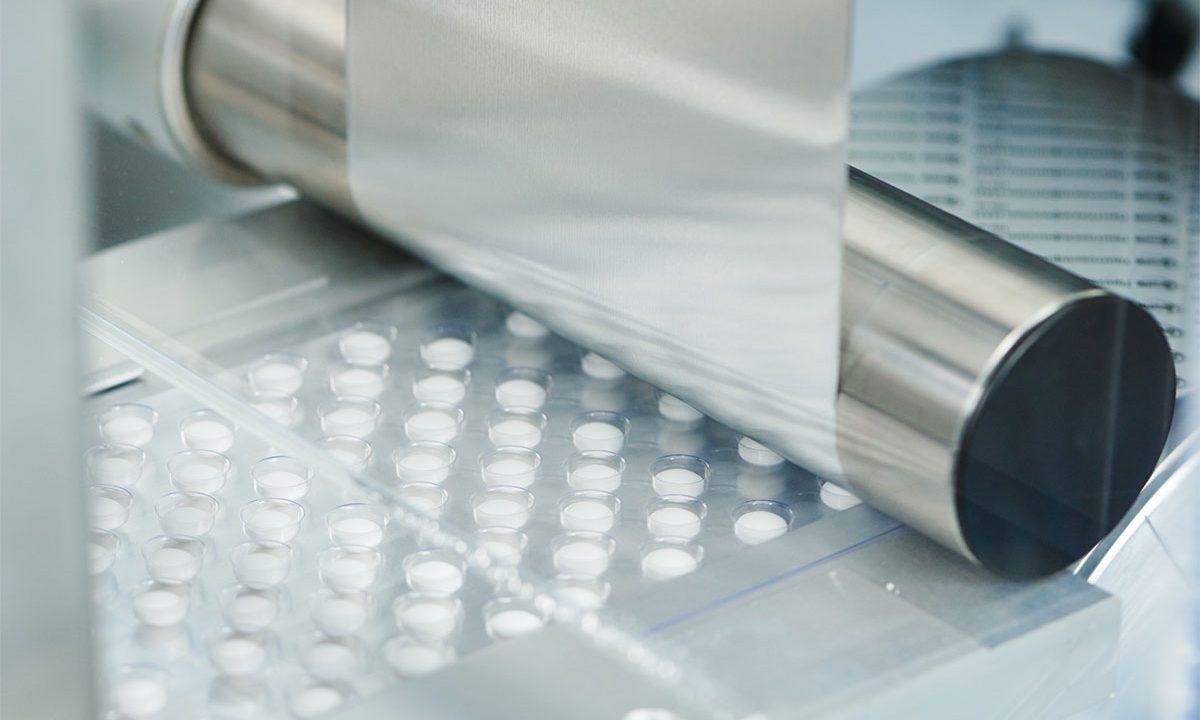Pharmaceutical packaging is based on two things that are important for success- patient safety and ease of use. There are other factors as well that make pharma packaging a success like child resistance, impenetrable sealing, long shelf life, etc. All of these factors become paramount when dealing with daily use medicines that are generally manufactured in pill or capsule form. Paracetamols, antacids, pain-killers, amphetamines, etc. are only a few medical drugs that are pressed into pills. All of these pills are regularly consumed by the masses and are stocked in first-aid boxes for emergency use. For oral medications that are stored for later, need to have excellent packaging, to save them from the effects of weather, contamination and time itself. Considering all these factors, only two forms of packaging are efficient for pills and capsules- strip packaging and blister packaging.
Strip packaging and blister packaging are both manufactured in the form of cards that hold the tablets inside a bubble. This blister or bubble is the only thing that stands between the drug and environmental factors like heat, bacteria, and moisture. While both blister packs and strip packs play their parts in a similar way, they still have differences in use, manufacturing, material, etc. which we’ll be discussing through this article.
Definitions of Blister and Strip Packaging
Blisters and strips are both unit dosage packages but the definitions make them different.
Blister Packaging
In blister packaging there are malleable but impermeable cavities (blisters), in which the tablets or capsules are stored. These blisters are then sealed using a foil or paper lid. The containment for tablets in this form of packaging are constructed using polymer material like PVC, using thermoforming or cold forming process.
Strip Packaging
Strip packaging is also made to keep unit dosages away from each other. Unlike blisters, however, strip packaging uses a web made of heat sealable film. This film is made of aluminum in most cases (alu-alu packaging) but in some cases the aluminum foil is also lined with a polymer material. The difference in strip packaging is that it doesn’t have a fixed cavity and both sides of the card are made of lidding material, engulfing the tablets or capsules.
Process used in Strip and Blisters
Strips and blisters provide containment for tables in a similar way but the process and machinery used is different. Here’s how-
Blister packaging process- The blister packs are made using the form-fill-seal method. The whole process takes place on the same machine and assembly line. The blisters are first formed on a heat press or cold press tray. The blister card moves forward and the tablets are placed simultaneously in the blister tray. In the end the lidding material (foil or paper) is placed on the blister tray and heat sealed, before cutting it into separate cards.
Strip packaging process- Strip packs are formed with the use of two webs of flexible film that can be heat sealed directly around the tablets and capsules. So, the two webs of foil or PVC metal film pass through a platen or roller sealing press. The tablets are dropped in pairs into the web pockets that are then heat sealed as individual brackets. These brackets are then cut into dosage numbers and boxed.
Which of the packing methods is faster?
If we compare the packaging method and machinery used for strip and blister packaging, stri[p packaging falls short on the speed. If the manufacturer has a product that requires continuous supply in the market, blister packs are much more cost and time efficient. The reason why strip packaging is slow is because the tablets being dropped one by one into the film web take up a lot of time before the brackets can be sealed off. While in blister packaging, the tablets are placed into the tray all at once and simultaneously sealed off in microseconds. Hence, blister packs are a faster alternative to strip packaging.
Are there any difficulties in the packaging processes?
There are certain difficulties in both blister and strip packaging. In blister packaging, most of the difficulties arise due to human or calculative errors. It might cause the blisters to be smaller in respect to the tablets, rendering the seal value obsolete. The tablets, thus, might get crushed with rough handling. However, with advancement in blister packaging machinery and less human intervention, blister packages are safer than strip packaging.
The only issue with strip packaging is the design. Use of foil on both sides tightened the strip around the tablet which makes it vulnerable to even slight mechanical impacts and perforation due to the heated air between the packaging films. The preformed slots in blister packages however have negligible effects from heat sealing and are mostly immune to perforation.
What are the advantages of using blister or strip packaging?
When it comes to protection and safeguarding the medicines, blister packs have a lot of features that serve as barriers from environmental contamination. Firstly, the blister packs have always been easy to use and accessing the drug only takes a push on the blister or peeling off the seal. While blister packs are made semi-rigid with PVC or mixtures of PVC and aluminum, they have greater strength when it comes to deflecting mechanical damages. The transportation of medicines can be turbulent and shaky, which can easily crush the tablet. With blister packs, however, even rough handling like throwing supply boxes doesn’t affect the drug inside.
Strip packaging has its own advantages that are needed for specific medicine types. Most of which come in a capsule form. Strip packaging is wrapped pretty tight around the capsules, which makes it difficult for air with moisture to interfere with the chemical composition. It keeps the capsules separated and organized so that they don’t stick to each other. Strip packaging also requires strong hands to tear the strip and access the medicine, making it more child resistant than blisters.
Both alu-alu strip and blister packaging machines are now prepared with human intervention in mind. The supply chain is studied and the machine is automated based on all errors in probability. While strip and blister packaging have different methods of manufacturing, both processes can be enhanced with the use of technology. If you need assistance in auditing the capabilities of your pharma packaging facility and improving them, contact Accupack Engineering.



